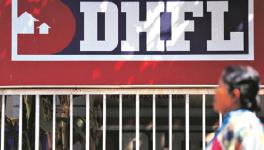Essar Steel: SC Lays Down Precedents on Contentious Aspects of Insolvency Process
Image for representational use only.Image Courtesy : NDTV
New Delhi: The Supreme Court on Friday ruled in favour of the Committee of Creditors (CoC) of Essar Steel in one of the longstanding cases since the Insolvency and Bankruptcy Code regime came into being, clearing all legal hurdles for ArcelorMittal to enter the Indian steel market. In the process, it has laid down certain precedents concerning the insolvency process in general.
According to the judgement, 92% of the Rs 42,000 bid offer made by ArcelorMittal goes to the financial creditors, predominantly banks, and the remaining 8% or Rs 1,196 crore will be distributed among the operational creditors.
Although, Essar Steel’s CoC approved Mittal’s bid offer in October 2018, the resolution process got delayed due to numerous litigations initiated by Essar Group and other operational creditors. However, the apex court bench, comprising Justices R F Nariman, Surya Kant and Ramasubramanian, has turned down a July 2019 order by National Company Law Appellate Tribunal (NCLAT) that put the operational creditors at par with the CoC in the distribution of available funds and declared the primacy of CoC over operational creditors.
A financial creditor is liable because of a contract, such as, loan or debt, whereas, an operational creditor is liable because of operation-related transaction.
The judgment is a restoration of primary law or code wherein secured creditors were given primacy over unsecured creditors, according to Shardul Shroff, managing partner of corporate law firm Shardul Amarchand Mangaldas.
“It (judgment) laid down the correct principles of transfer of property law, bankruptcy law and banking law on the basis on which pricing of secured and unsecured loans is determined, while clarifying on several provisions of IBC code,” Shroff told Bloomberg Quint.
As per the approved distribution plan by the CoC, the State Bank of India is set to get Rs 12,161 crore, followed by Canara Bank (Rs 3,493 crore), IDBI Bank (Rs 2,282 crore), Edelweiss ARC (Rs 7,600 crore) among others.
Essar Steel was declared as a non-performing asset in June 2017 by the Reserve Bank of India and has notified to initiate the IBC resolution process on it. At that time, Essar Steel’s total debt amounted to Rs. 54,389 crore. The insolvency process took over 28 months till date owing to numerous rounds of litigations from the Ruias, former promoters of Essar Steel.
The judgment has dealt with several aspects of the Corporate Insolvency Resolution Process (CIRP). The apex court asserted that the role of Resolution Professional (RP) in CIRP is not adjudicatory but administrative. The court also clarified that the extension of time period for the resolution process is left open to NCLT, while stating that a 330-day period suggested by the Union cabinet was not mandatory.
Furthermore, the court clarified the role of adjudicating tribunal (NCLT) and appellate tribunals (NCLAT) on matters of the commercial wisdom of CoC. It concluded that the “scope of enquiry and grounds on which the decision of approval of the resolution plan by the COC can be interfered with by the NCLT, is limited to what is set out in Section 31(1) read with Section 30(2) and by the NCLAT under Section 32 read with Section 61(3) of the 66 of the code.”
Get the latest reports & analysis with people's perspective on Protests, movements & deep analytical videos, discussions of the current affairs in your Telegram app. Subscribe to NewsClick's Telegram channel & get Real-Time updates on stories, as they get published on our website.
























